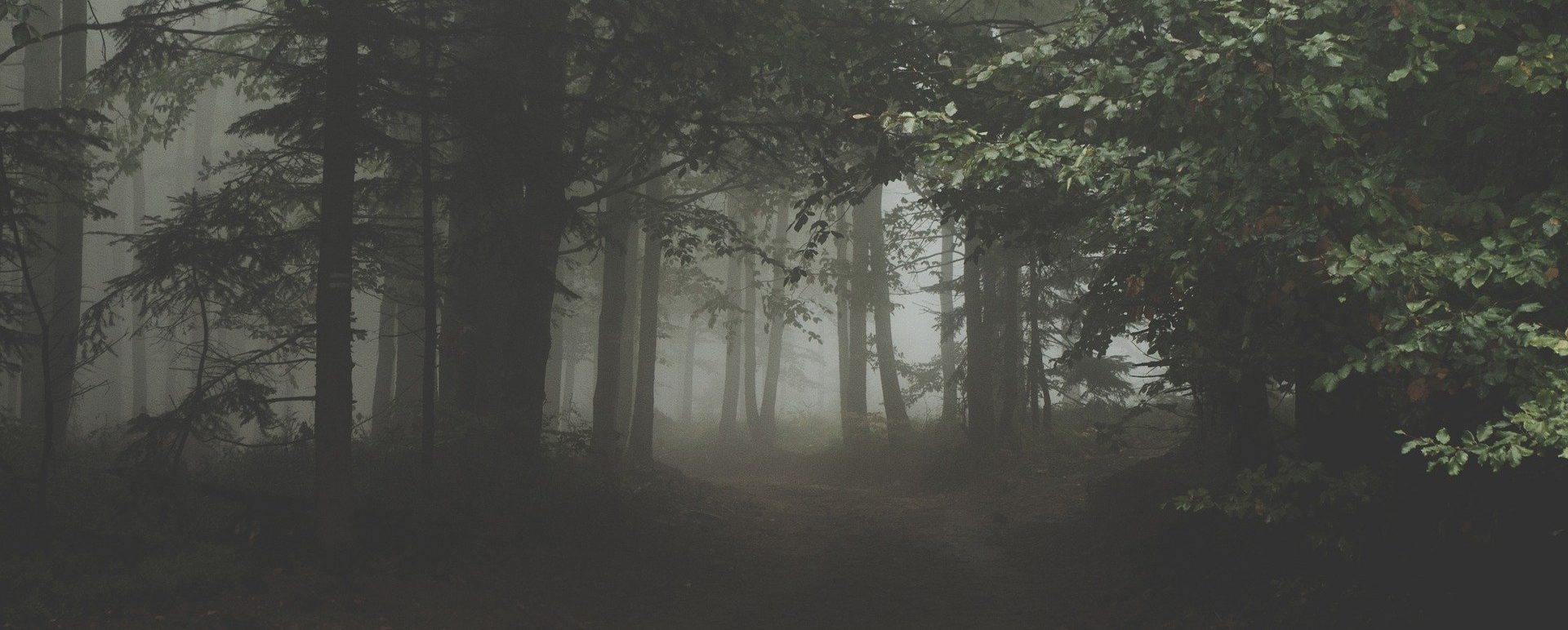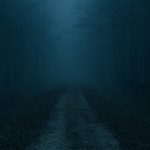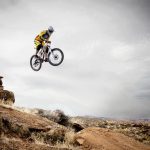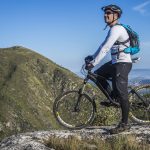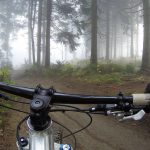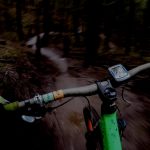Mountain biking at night is an entirely new experience. During the winter, the sun goes down a lot earlier so if you want to bike, chances are you are biking in the dark. I started thinking to myself what makes mountain biking more dangerous in the dark and how to avoid. So I put together those notes in this article for you.
Yes, mountain biking at night can be more dangerous than biking during the day, but you can minimize the danger by being prepared. With a good set of lights, mountain biking at night might be the most amazing thing you’ll try on your bike.
Is Biking at Night More Dangerous?
Mountain biking at night is potentially more dangerous than biking during the day. It’s harder to see both the trails and other bikers so there is an added danger to the normal ride.
If you ever played hide-and-seek as a kid when it was dark, you know how much easier it was to run along and catch your foot on a stump or a branch to whack you in the head.
The same thing applies to biking at night. When it gets dark, it’s harder to see the smaller objects that will trip you up like roots or a branch hanging down that can hit you in the face.
However, night biking is like riding in a completely new place. Things look different. The ride just has a different feel.
The key to enjoying night biking is to be prepared with lights and such, and to bike a little differently so you don’t have something like hit a big jump and then realize there are a few stumps where you are about to land.
How Can You Make Night Biking Safer?
There are a lot of things that you can do to make biking at night much safer and reduce the chance of an injury.
- The first thing you want is a good headlight attached to your handlebars. When it’s attached to your handlebars, it’ll shine the way that you are steering so as you go into a turn, the light is turning as well so you can see where you are going.
- You’ll also want to get a headlight to attach to your helmet. While the handlebar light is amazing, I prefer one on the helmet also for 2 big reasons. The first is that the helmet light will shine wherever you look. The second is that in case your handlebar headlight goes out you have a backup while you stop to replace the batteries or get to where you are going.
- You’ll also want to get a taillight for your bike. This is so that other riders can see where you are at and less chance of crashing with another rider.
- You’ll want to have some reflectors on the bike so that other riders can see you easier. You’ll want to put reflectors on the bike wheels so that other riders can see you and also know how fast you are going. On the top tube and down tube I like to put reflective tape in a few spots so you stand out. Tape like this is pretty easy to find even at local stores.
All of these items are around making everything easier to see. Both your seeing the trail and your surroundings, and other people being able to see you.
What Equipment Do You Need For Safe Night Mountain Biking?
A Very Strong Headlight
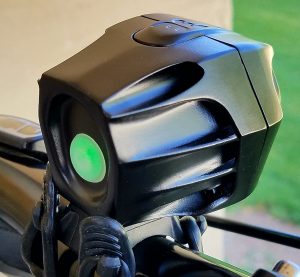
You’ll need a bike headlight that is at least 1500 lumens to light up everything in front of you. With a light this strong you light up the path like it’s daytime.
Ideally one with Cree lighting which means it looks as natural as it does during the day and not a weird tint. This one on Amazon is amazing and puts out 1600 lumens and it can handle water and mud with no problems.
The key is to make sure the light is aimed correctly. Ideally the main focus or brighter part of the light hits the trail about 25 feet ahead of you. That way it doesn’t blind other riders and it’s useful light. If you are riding behind someone, stay at least 50 feet back for the same reasons.
A Helmet Light
Having a smaller light attached to your helmet can help in a lot of ways. It sends light where you turn your head, and if you have to stop to work on your bike having the headlight pointed where you are working is really handy. For a bonus you have a backup light that you can use temporarily if you main bike headlight goes out.
Really since most of these only put out 100 lumens you can use just about anything but this one on Amazon looks like it would work well for this and has 40+ hours on a charge.
An Easy-To-See Taillight
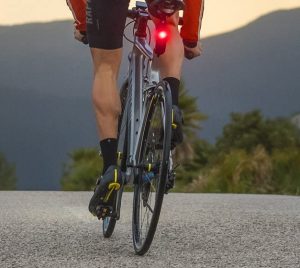
You’ll want a good taillight so that other riders can see you on the trail.
While almost all of them are visible at night, it’s well worth it to step up to one that is extremely easy to see in the daylight too. This one from Garmin is worth it for the daytime safety alone if you bike near the road. You can see it from a football field and a half away. We’re talking 150 yards here. Makes you easy to see when on the trails and especially if you have to run along the road for a bit.
Reflective Tape
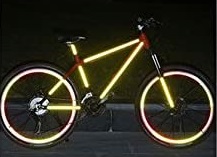
Reflective tape is great so that other riders can clearly see where you are and not run into you.
Now, you don’t need to light it up like the above or people might look at you weird, but I would definitely put one on the post, the downtube, and the top tube at a minimum so from the sides you stand out. Possibly even a couple of small strips on your helmet as you’re not always on your bike when resting.
Wear Proper Night Mountain Biking Glasses
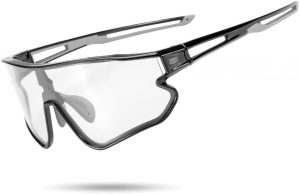
You definitely won’t want to wear your tinted glasses at night. Don’t get tempted to not wear any at all either.
What you want are clear protective biking glasses that are full-frame.
Why full frame? Because there is a good chance you won’t see a branch until it is just hitting you in the face. Trust me, it has happened to me a few times.
Full frame glasses won’t defect like the ones that only have a frame on the top. They stand up better to getting hit and not cracking and possibly hitting your eyes.
Protect your eyes biking at night and get a good set like these from Amazon. Make sure you have sturdy glasses or possibly even wear ski goggles.
I put together an article with the top 7 night mountain biking glasses if you want to see my recommendations.
Some Tips For Safer Biking at Night
Once you add in the extra lights on your bike, your visibility is now pretty good, almost as good as it is during the day. Note that I said almost.
You’re going to get shadows here and there, and before you jump something, you won’t be able to see what is on the other side since you light has to clear the obstacle many times before you can fully see what is coming up.
So there are a few things you need to change in how you bike so you avoid crashes at night and you can keep having fun even when the sun sets earlier.
If you want to avoid the dangers in mountain biking at night, here are some tips to follow:
- Ride trails that you have biked during the day and are familiar with so you know what to expect on the trail.
- Ride with a buddy when you can.
- Make sure you lights are charged up and you have spare batteries ready to go.
- Check your bike over good. Make sure your tires are in good shape and everything works like it should.
- Keep your speed under control. With a headlight you can only see effectively about 30-35 feet ahead so you want to have time to react to logs and such in the trail.
- Wear clothing that has reflective fabric. While you’re taking a break, you may walk around and stretch your legs. You want to make sure you are visible to other riders while doing this.
- Layer up. You won’t have the sun keeping you warm so dress for chillier weather.
- Wear clear glasses made for mountain biking at night.
- Don’t take big jumps where you don’t know what’s on the other side when you come down.
- Wider-tire bikes with taller wheels can absorb unexpected roots and stones and curbs better.
- Make sure you bring your biking backpack and that has all of your normal gear PLUS it has an extra flashlight and duct tape in there. You might need it in the night biking to attach a light to something.
- Make sure you have a charged cell phone just in case.
- As with day riding, always wear good riding gloves to protect your knuckles from branches.
- Ride at least 50 feet behind another rider. You don’t want your headlight creating shadow for them and causing them a safety problem.
- Take it easy with your speed so you have time to avoid obstacles
- Don’t make big jumps, you never what is on the other side such as a big drop.
Is Mountain Biking at Night Better?
It’s not that there are many riders that choose to only ride at night. Most of the time, it’s because during winter months there is less daylight hours and sometimes riding in the dark is the only option if you want to ride.
So it’s kind of like comparing one set of trails to another. Both have pros and cons, like day and night biking.
It is different however and the same trail during the day has a different feel at night. That is makes night mountain biking intriguing.
Why Would You Choose to Bike At Night If There’s More Risk?
So there are lots of mountain bikers that ride trails and such at night. Why would they do that? There are lots of reasons so let’s go ahead and look and some of them:
- Not enough time to bike while daylight. This happens quite often during winter months when there isn’t nearly as much daylight. It’s usually either don’t bike for the winter, or get used to a little night biking.
- It hones your skills and your reaction time.
- Trails seem new because they look so different at night.
- During the summer, it may take until night to be cool enough to ride. If you’ve ever been in Arizona during the summer you know what I mean.
- The trails are less crowded
So Mountain biking at night is a little more dangerous but if you buy the right equipment and exercise caution, it can be safe and an amazing new experience.
